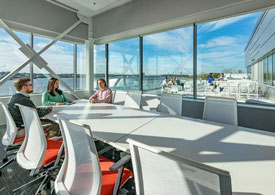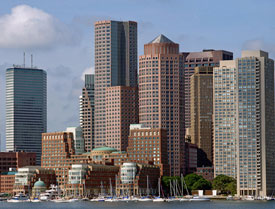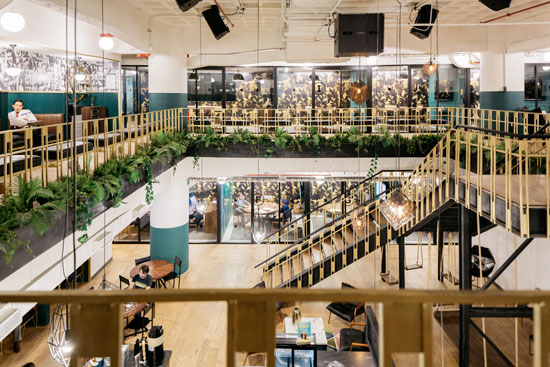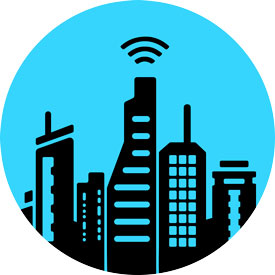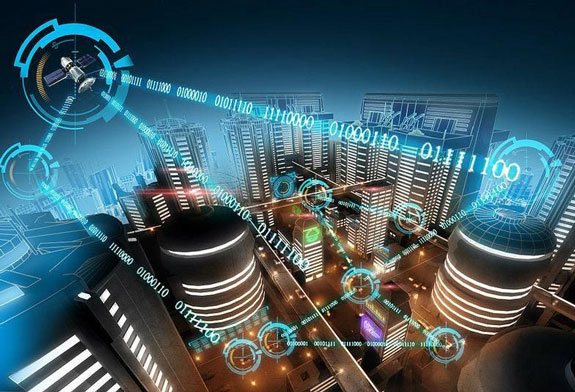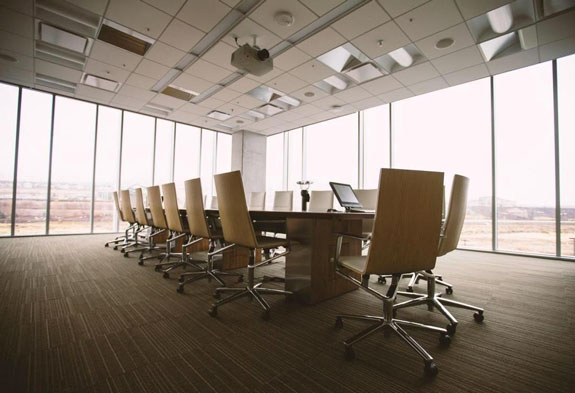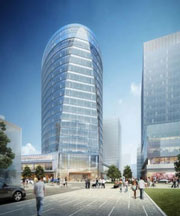Office design has evolved to be less invasive to the environment while providing a healthier experience for its occupants.
When asked about current workplace design trends, Dan Perruzzi of Boston-based Margulies Perruzzi Architects shared his views with Commercial Property Executive:
Companies are wrestling with the best balance between quiet and/or private space and collaboration space. Employees need private space, but they also need easy access to their colleagues for beneficial interactions. Individual, focused work has to be supported while simultaneously supporting group work.
Everyone is trying to do more with less. Companies are actively reviewing space standards to see where they compare with the competition. Metrics of area per seat and seats per assigned staff are critical areas of focus today. Given that in many areas basic sustainability has been incorporated into building codes, there is a greater focus on wellness and health in workplace design.

